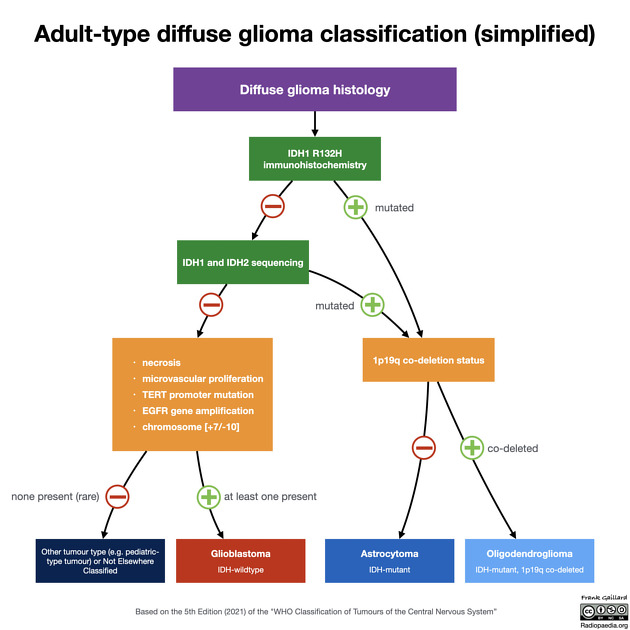1p19q codeletion stands for the combined loss of the short arm chromosome 1 (i.e. 1p) and the long arm of chromosome 19 (i.e. 19q) and is recognized as a genetic marker predictive of therapeutic response to both chemotherapy and combined chemoradiotherapy and overall longer survival in patients with diffuse gliomas, especially those with oligodendroglial components 1,2,4.
Historically, the 1p19q codeletion was present in up to 70-85% of oligodendrogliomas and 50% of oligoastrocytomas 1,4. Since the updated 4th edition of the WHO classification of CNS tumors (2016), the importance of 1p19q codeletion had become essential for the diagnosis of oligodendroglioma (along with the IDH mutation).
In other words:
IDH positive + 1p19q codeletion = oligodendroglioma = better prognosis
IDH positive + no 1p19q codeletion = astrocytoma
When diffuse adult gliomas have non-mutated IDH (i.e. "wild-type"), the status of 1p19q is of uncertain clinical significance and the tumor is considered to be not elsewhere classified (NEC) 6,7.
Similarly, if deletion is partial (e.g. 1p loss with 19q retention), then tumors should also be considered NEC 7.






 Unable to process the form. Check for errors and try again.
Unable to process the form. Check for errors and try again.